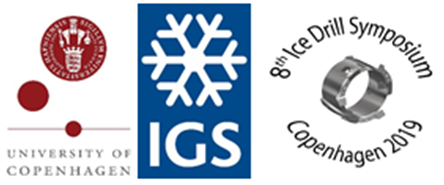Speaker
Description
The second deep ice coring project at Dome Fuji, Antarctica reached a depth of 3035.22 m on 26 January 2007. The age of the ice core bottom was 720,000 years.
In response to IPICS 'OLDEST ICE‘, the third deep ice coring project is underway to obtain ice cores older than 800,000 years. We are currently developing and producing a new deep drill system. Various problems that were encountered in the 2nd drilling operation have been resolved, but there were no major design changes in the machine itself. The JARE drill features a simple design that has an ice chip transport mechanism with an Archimedean pump and a booster, a chip chamber with many small holes for stable cutting/screening, and an adverse current prevention system of chips during drill ascent. We will report separately on communication and control systems between the surface and the drill as development progresses. The drilling fluids examined were silicone oil and butyl acetate. At Dome Fuji, the temperature dips to lows of – 50 °C even at a depths of 600 m. Since kinematic viscosity of silicone oil is about 3 times larger than butyl acetate at such low temperature and expensive, butyl acetate is preferred. With regard to butyl acetate, there have been concerns about its influence on the human body. However, its composition list posses no serious issues. With experience from the 2nd deep drilling project, it was possible to work comfortably without a mask in temperatures of -15 to -25 °C at the drilling site, with strong ventilation and regular cleaning of the drill chip, maintaining an almost dry floor. In addition, there will be an experimental change to the step cutter.

